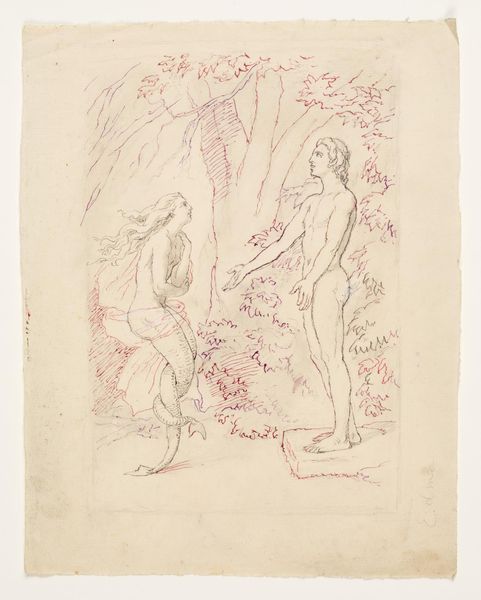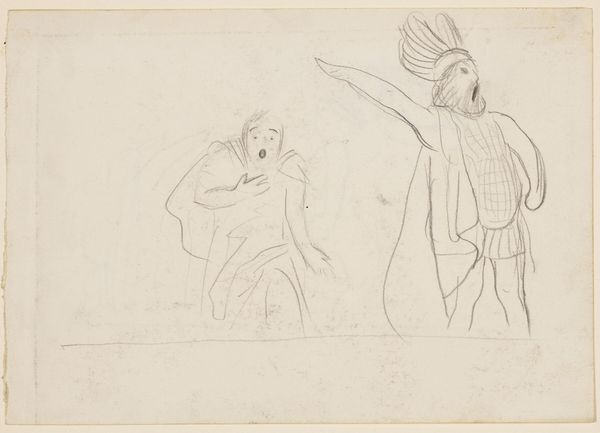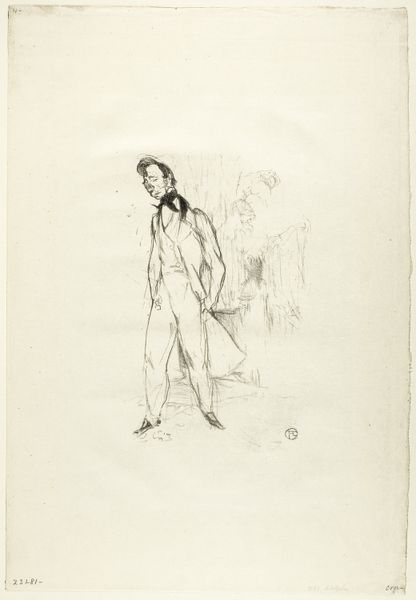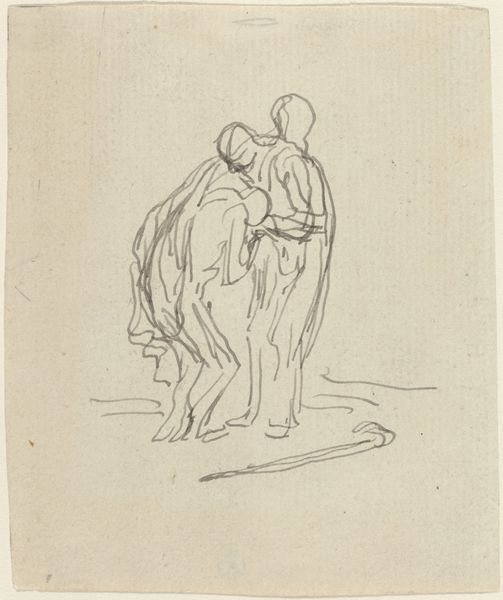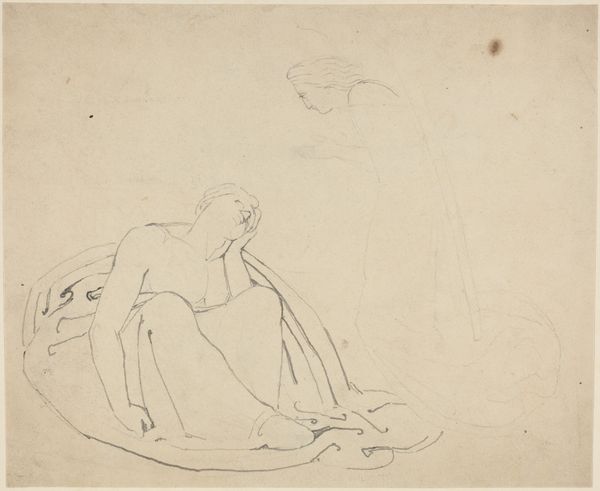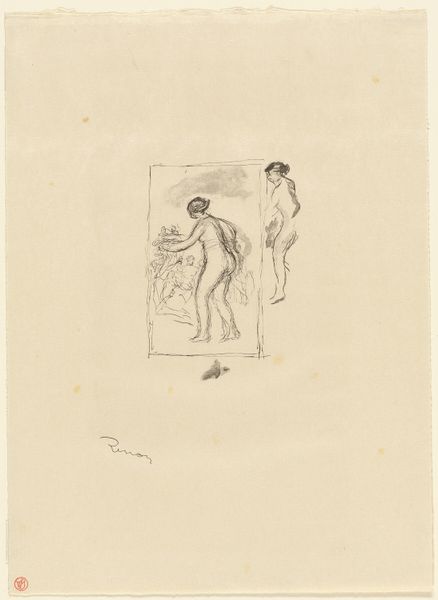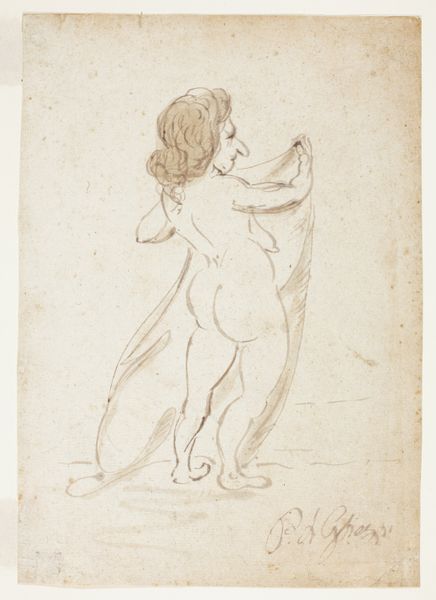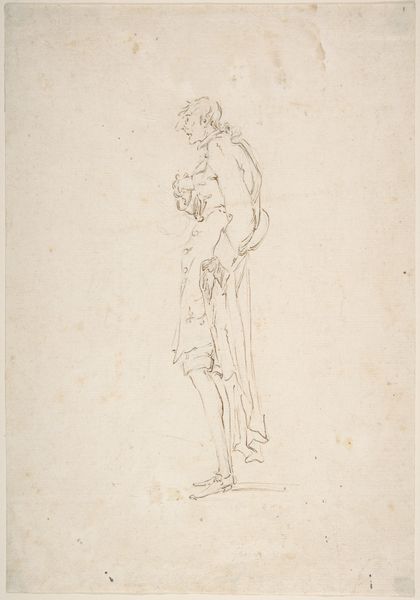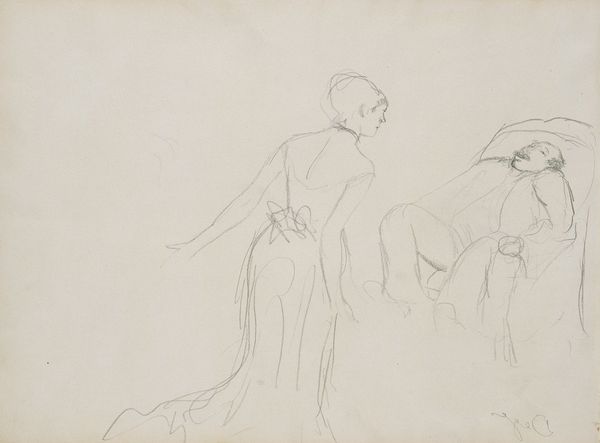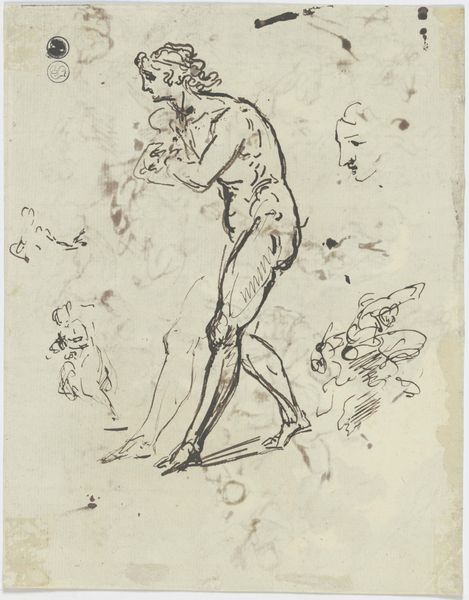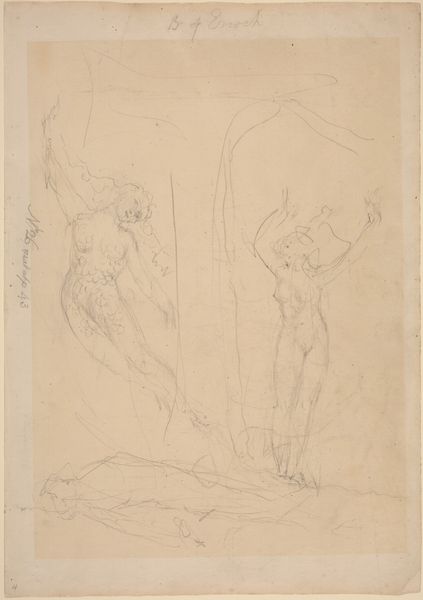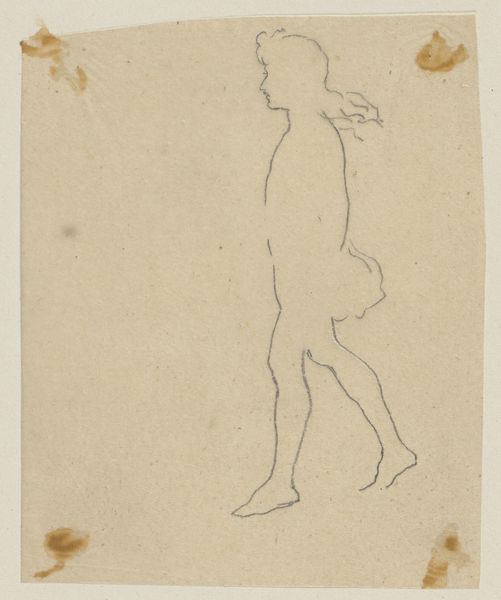
drawing, ink, pencil
#
portrait
#
drawing
#
ink drawing
#
narrative-art
#
pencil sketch
#
figuration
#
ink
#
pencil
Dimensions: 284 mm (height) x 223 mm (width) (bladmaal)
Curator: Today, we’re looking at a drawing by Lorenz Frølich entitled "The Prince Meets the Little Mermaid," created sometime between 1903 and 1906. Editor: It's a very delicate pencil and ink sketch, isn't it? Ethereal even. The tentative lines give it an air of fragility, which mirrors the subject, in a way. Curator: Absolutely. Frølich was a key figure in Danish Golden Age art, deeply interested in illustrating folklore and historical narratives. This drawing reflects the rise in popularity of Hans Christian Andersen’s tales. He perfectly captures the cultural mood of romantic nationalism. Editor: You know, focusing on the materials, I wonder about the type of paper used. It looks quite thin. Considering it’s a preliminary sketch, maybe Frølich was experimenting, working out the composition. The quick, light strokes, the way he renders form with so few lines speaks to an efficient process, one focused on conveying the most information using the least amount of material. Curator: Precisely! These illustrations were commissioned and gained popularity among a rising middle class, reinforcing ideals of national identity through art that were easily digestible. The tale’s moral lessons also would appeal to these new consumer bases, ensuring repeat revenue for publisher and artist alike. Editor: Interesting that you mentioned moral lessons; because the choice of pencil and ink over something like oil or even watercolor—lends a stark quality. Highlighting that this isn’t all rosy romantic fantasy. More of a cautionary examination on desire, change, and… material loss. Curator: Indeed! Though it seems a simple drawing, Frølich really tapped into the social anxieties of the period. It is now displayed here at the SMK, or Statens Museum for Kunst. Editor: Examining process has changed my initial impressions, to be sure. The transparency allows you to see both the intent, and the labour to arrive at the result in one combined image, wonderful. Curator: I find myself newly appreciative of Frølich's subtle commentary, framing folklore as a reflection of evolving social mores.
Comments
No comments
Be the first to comment and join the conversation on the ultimate creative platform.
